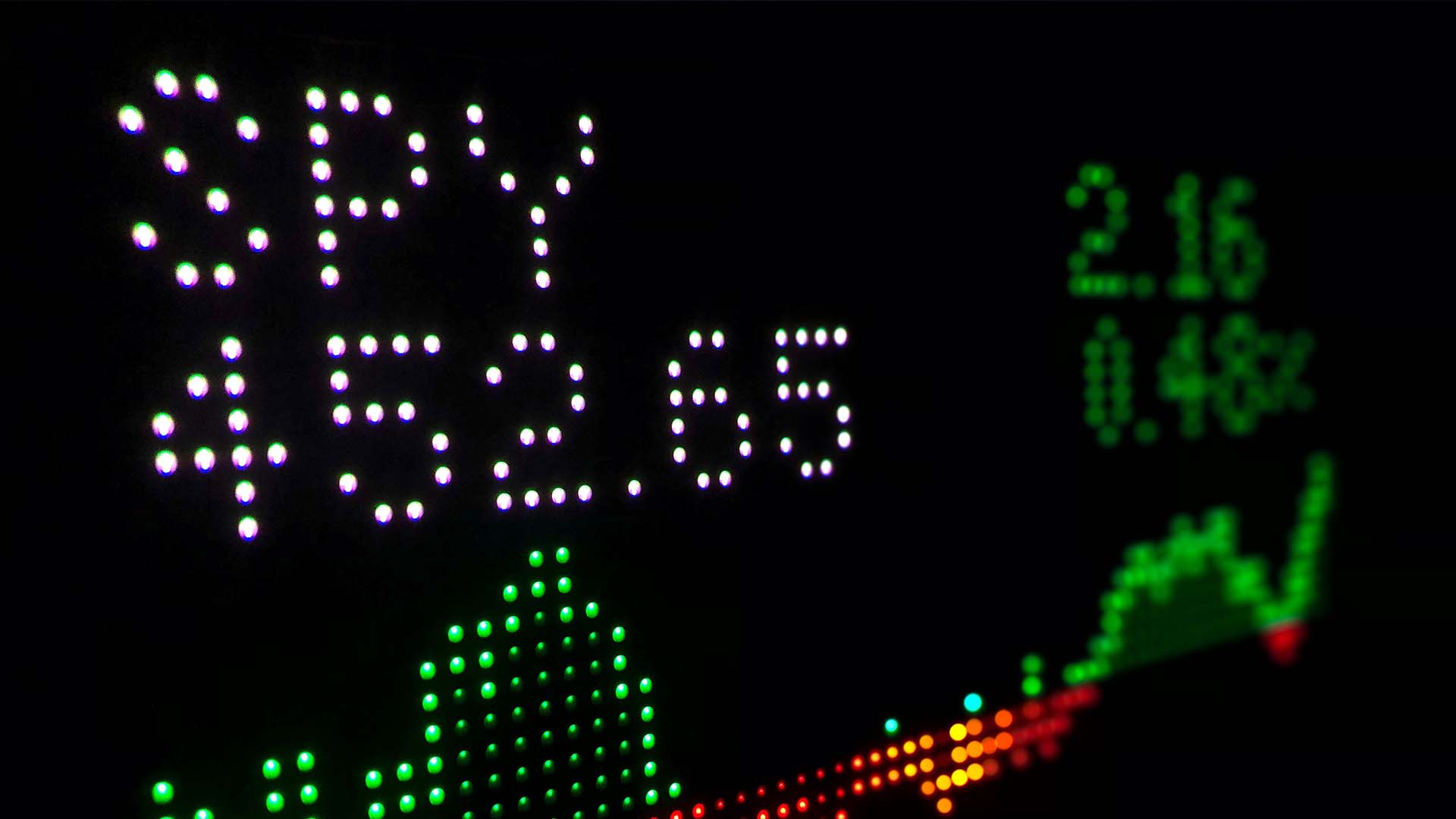Introduction
Welcome to our in-depth exploration of “Day Trading vs Swing Trading.” This article is designed to equip you with essential strategies and insights, helping you navigate the dynamic realms of day and swing trading with confidence and expertise. Whether you’re a novice trader or looking to refine your skills, these power steps will guide you towards mastery in these two distinct trading styles.
Video Summary: Day Trading vs Swing Trading
This video by Pete, provides a snapshot of the trading landscape. It starts with a review of the stock AFRM, the previous pick, followed by an announcement of a live streaming event. The video extensively covers various aspects of trading, focusing on day trading vs swing trading by looking at swing trading opportunities in a bullish market and comparing it with the precision required in day trading. It concludes with a detailed analysis of various stocks, including AFRM and VZ, providing practical insights into swing trading strategies.
Table of Contents
Understanding Day Trading vs Swing Trading
Day trading vs swing trading represent two distinct approaches to the stock market, each catering to different trader profiles and objectives. Day trading is characterized by its high-speed nature, where traders buy and sell securities within the same trading day, capitalizing on small price movements. This method demands constant market vigilance, quick decision-making, and a high tolerance for risk, making it more suited for full-time traders.
In contrast, swing trading operates on a longer timeframe, with positions held over several days to weeks, aiming to profit from larger market shifts. This approach requires less intensive monitoring and offers a more relaxed pace, making it ideal for those who cannot dedicate their entire day to trading. While both strategies aim to exploit market volatility, they differ significantly in their operational tempo, risk exposure, and the level of commitment required from the trader.

Day Trading
Day trading is akin to being a sniper in the trading world. It requires precision and quick decision-making, often within the same trading day, and is a high-intensity, dynamic form of stock trading characterized by its defining feature: the buying and selling of financial instruments within the same trading day. This approach is marked by a rapid pace, requiring traders to make swift, decisive moves to capitalize on short-term price fluctuations in the market. This is important to consider when distinguishing between day trading vs swing trading.
Day traders typically operate on a minute-to-minute basis, often executing numerous trades in a single day, which necessitates a constant, vigilant monitoring of market trends and news events that could impact stock prices. This strategy demands a significant amount of discipline, focus, and a deep understanding of market mechanisms. Risk management is a critical component of day trading, as the fast-paced environment and the potential for sudden market shifts can lead to substantial gains or losses within a very short time frame.
Additionally, day trading involves a thorough analysis of technical indicators and charts to identify potential entry and exit points, making it more reliant on technical analysis than its longer-term counterparts. This trading style is often preferred by individuals who can dedicate their full attention to the markets during trading hours and possess the psychological stamina to handle the high stress and risks associated with quick decision-making under uncertainty.
Interested In Learning More?
Swing Trading
Swing trading, on the other hand, is more about dropping a bomb from an airplane. It doesn’t demand pinpoint accuracy but rather a general direction. This method suits traders who prefer holding positions for several days or weeks, offering a balance between speed and patience. Use this to discern between day trading vs swing trading.
Swing trading is a methodical approach to the stock market, characterized by holding positions for several days to several weeks, bridging the gap between day trading and longer-term investing strategies. This style capitalizes on the ‘swings’ or changes in market sentiment, aiming to profit from larger price movements that unfold over days or weeks. Unlike the fast-paced environment of day trading, swing trading allows for a more in-depth analysis of market trends, including fundamental factors that may influence stock prices over the medium term.
Traders in this domain typically rely on a combination of technical analysis and market fundamentals to identify potential trade opportunities, focusing on stocks that exhibit clear trends or patterns. Risk management in swing trading is nuanced, as positions are exposed to overnight and weekend market shifts, requiring a robust understanding of broader market dynamics and individual stock performance.
This trading style is particularly appealing to those who cannot commit to the intensive monitoring required in day trading, offering a more balanced approach in terms of time commitment and psychological strain. Swing traders must possess patience and the foresight to anticipate market moves, holding onto positions through the inevitable ups and downs within their chosen time frame, making this approach well-suited for individuals seeking to blend the agility of short-term trading with the perspective of longer-term market movements.

Comparing Day Trading vs Swing Trading
Time Commitment
Day trading vs swing trading differ significantly in their demands on a trader’s time. Day trading requires a substantial commitment, as traders must constantly monitor the markets, analyze trends, and make decisions on a minute-by-minute basis during market hours. This near-continuous engagement makes it akin to a full-time job, demanding significant attention and quick reactions to market changes. In contrast, swing trading allows for a more flexible time commitment, as positions are held over days or weeks, reducing the need for constant market vigilance and enabling traders to balance trading with other personal or professional responsibilities. Time commitment is very different between day trading vs swing trading.
Risk and Reward
When considering risk and reward, day trading vs swing trading present distinct profiles. Day trading involves higher immediate risk due to its focus on rapid, short-term market fluctuations, often leading to significant volatility in a trader’s daily earnings. This approach can yield high rewards but also exposes traders to the potential for quick and substantial losses, especially given the frequent use of leverage. Swing trading, while still risky, tends to offer potentially more stable returns as it capitalizes on longer-term market trends, allowing for more time to analyze and react to market changes, thereby somewhat mitigating the immediate risks associated with sudden market shifts.
Skill Set
The skill sets required for day trading vs swing trading differ notably due to their distinct operational approaches. Day trading demands a high level of proficiency in technical analysis, quick decision-making skills, and the ability to react swiftly to market news and price changes. This form of trading requires an acute attention to detail and the capacity to manage stress under the pressure of rapid, high-stakes trading. Conversely, swing trading calls for a more balanced skill set that combines an understanding of technical chart patterns with fundamental market analysis, alongside a measure of patience and strategic foresight to anticipate and capitalize on longer-term market trends.
Day Trading vs Swing Trading: Strategies for Success
1. Market Analysis
Understand market trends. For day trading, focus on short-term market movements. Swing traders should look at longer-term trends and economic indicators.
In market analysis, day trading predominantly relies on technical analysis, focusing on chart patterns, price movements, and trading volumes to make quick, informed decisions within the day. It emphasizes real-time data and short-term market trends. Swing trading, on the other hand, blends technical analysis with fundamental analysis, considering broader market trends, economic indicators, and company-specific news, which are crucial for making decisions over a longer trade-holding period.
2. Choose the Right Stocks
Day traders should look for stocks with high liquidity and volatility. Swing traders need stocks with steady trends and clear patterns.
Choosing the right stocks for day trading vs swing trading hinges on different criteria due to their unique trading dynamics. Day traders often seek highly liquid and volatile stocks, allowing for the execution of quick trades and capitalization on short-term price movements. In contrast, swing traders look for stocks with clear, sustained trends or predictable patterns, focusing on securities that offer potential for substantial movement over a longer period, aligning with their extended trade-holding timeframe.
3. Set Realistic Goals
Set clear, achievable goals for both profits and losses. Know when to exit a trade, whether you’re winning or losing.
Setting realistic goals in day trading vs swing trading involves different considerations due to their respective trading horizons. Day traders typically set daily or even intra-day profit and loss targets, adjusting their strategies to the high-frequency and volatile nature of their trades. Swing traders, conversely, often set broader goals based on longer-term market movements, focusing on larger price shifts over weeks or months, which requires a more measured approach to profit and loss expectations.
4. Manage Your Risk
Use stop-loss orders and limit orders to manage risks. Never invest more than you can afford to lose.
Risk management in day trading involves setting tight stop-loss orders and closely monitoring positions to react swiftly to intraday market fluctuations, minimizing potential losses in the high-speed trading environment. Swing trading, in contrast, requires a different approach to risk management, often involving wider stop-loss parameters to accommodate for longer-term market volatility and the holding of positions over days or weeks, necessitating a more strategic, big-picture perspective on potential market shifts.
5. Stay Informed
Keep up with financial news and events that could impact the markets. This is crucial for both day and swing traders.
Staying informed in day trading vs swing trading is nuanced. In day trading it means keeping abreast of real-time market news, economic events, and technical indicators that can trigger immediate market movements, requiring continuous monitoring of financial news sources and market data. Swing trading, while also benefiting from staying current with market trends and news, allows for a more in-depth analysis of economic reports, earnings forecasts, and long-term market trends, aligning with its longer trade-holding period and broader market perspective.
6. Use Technology
Leverage trading platforms and tools for better analysis and quicker execution.
In day trading, the use of technology focuses on sophisticated trading platforms capable of executing trades at high speeds, real-time charting tools, and automated trading systems to capitalize on fleeting market opportunities. For swing traders, technology plays a role in providing comprehensive chart analysis tools, longer-term trend analysis software, and platforms that support detailed fundamental research, aligning with their need for a broader and more strategic market overview. This is another subtle distinguishing feature between day trading vs swing trading.
7. Continuous Learning
The market is always evolving. Stay updated with the latest strategies and trends.
Continuous learning in day trading often revolves around mastering technical analysis, understanding market psychology, and staying updated on the latest high-frequency trading strategies and tools. In contrast, continuous learning for swing traders typically involves a deeper dive into both technical and fundamental analysis, understanding long-term market trends, and developing skills to adapt to various market phases over extended periods. Both styles, however, require a commitment to ongoing education to stay adaptive and successful in the ever-evolving financial markets.
Conclusion: Day Trading vs Swing Trading
Day trading vs swing trading each have their unique challenges and rewards. By understanding the differences and employing the right strategies, traders can find success in either approach. Remember, the key is to align your trading style with your personal goals, risk tolerance, and lifestyle.
Happy trading!
Interested In Learning More?
External Links










